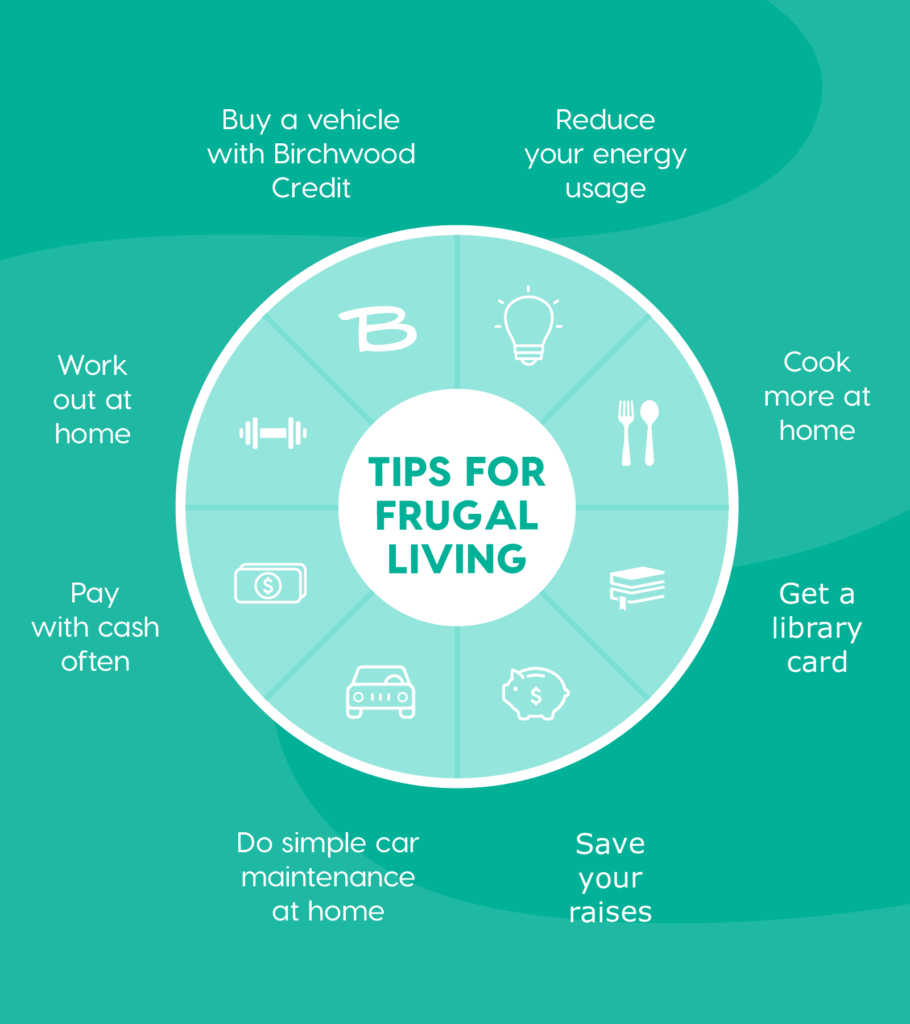
Living frugally doesn’t mean sacrificing your quality of life; it’s about making smart decisions to maximize your savings and financial freedom. By adopting frugal living habits, you can save thousands of dollars each year while enjoying a comfortable lifestyle. This guide will walk you through actionable tips to help you cut unnecessary expenses, boost savings, and achieve your financial goals.
Why Choose Frugal Living?
Frugal living is not about being cheap—it’s about being intentional with your money. The benefits of frugal living include:
- Financial Security: Build an emergency fund and reduce financial stress.
- Debt Reduction: Allocate savings toward paying off debt faster.
- Freedom to Invest: Redirect money toward long-term goals like retirement or travel.
By adopting the tips below, you can start seeing significant savings in no time.
1. Create a Budget and Stick to It
A budget is the cornerstone of frugal living. It helps you track income, expenses, and savings goals.
Steps to Create a Budget:
- List all sources of income.
- Categorize and track monthly expenses (e.g., housing, groceries, utilities).
- Set realistic savings goals.
- Use budgeting tools like Mint, YNAB, or Excel spreadsheets to monitor spending.
Pro Tip: Allocate a percentage of your income to savings before spending on other items.
2. Embrace Meal Planning
Food expenses can quickly add up, but with proper planning, you can save hundreds each month.
How to Save on Food:
- Plan weekly meals based on sales and discounts.
- Cook at home instead of dining out.
- Buy groceries in bulk and freeze leftovers for later.
- Use apps like Ibotta or Fetch Rewards to earn cashback on groceries.
3. Cut Unnecessary Subscriptions
Many people pay for subscriptions they rarely use. Audit your recurring expenses to find areas where you can save.
Examples to Review:
- Streaming services (e.g., Netflix, Hulu, Disney+).
- Gym memberships.
- Magazine or newspaper subscriptions.
Action Plan: Cancel services you don’t use regularly or opt for free alternatives.
4. Reduce Utility Costs
Lowering your monthly utility bills is an easy way to save.
Energy-Saving Tips:
- Switch to energy-efficient LED bulbs.
- Use programmable thermostats to manage heating and cooling.
- Unplug electronics when not in use.
- Wash clothes in cold water and hang them to dry when possible.
5. Shop Smart and Avoid Impulse Purchases
Being strategic about shopping can lead to significant savings.
Tips for Smart Shopping:
- Wait 24 hours before making non-essential purchases.
- Use price comparison tools like Honey or CamelCamelCamel.
- Shop during sales events like Black Friday or end-of-season clearance.
- Buy second-hand items from thrift stores or online platforms like eBay or Facebook Marketplace.
6. Ditch Expensive Habits
Some daily habits can drain your wallet without you realizing it.
Habits to Avoid:
- Buying coffee daily at a cafe.
- Smoking or drinking alcohol excessively.
- Ordering takeout multiple times a week.
Alternative Solutions: Brew coffee at home, find cheaper hobbies, or cook meals in batches.
7. Embrace DIY Solutions
Doing things yourself can save you a fortune over time.
DIY Ideas:
- Learn basic home repairs (e.g., fixing a leaky faucet, painting walls).
- Make homemade cleaning products using natural ingredients.
- Sew or mend clothing instead of replacing it.
8. Use Public Transportation
Owning and maintaining a car is costly. Consider alternative transportation methods to save money.
Options:
- Use public transit, carpool, or bike for short distances.
- Walk whenever possible.
- Opt for ride-sharing services during special occasions only.
9. Declutter and Sell Unused Items
Turn clutter into cash by selling items you no longer need.
Where to Sell:
- Online platforms like eBay, Craigslist, or Poshmark.
- Local consignment shops or garage sales.
Bonus: Decluttering not only earns money but also helps you appreciate the items you already own.
10. Switch to Cashback and Rewards Programs
Maximize your spending by earning rewards on everyday purchases.
Tools to Use:
- Cashback apps like Rakuten or TopCashback.
- Credit cards with rewards programs (be sure to pay off the balance monthly to avoid interest).
- Loyalty programs at grocery stores and gas stations.
11. Practice Minimalism
Minimalism isn’t just about owning less; it’s about valuing what truly matters.
How to Start:
- Focus on quality over quantity.
- Avoid buying items that don’t add value to your life.
- Invest in versatile, durable goods.
12. Leverage Free or Low-Cost Entertainment
You don’t need to spend a fortune to have fun.
Ideas for Affordable Fun:
- Explore local parks and trails.
- Attend free community events.
- Use the library for books, movies, and online resources.
- Host potluck dinners or game nights with friends.
13. Save on Insurance
Insurance premiums can be a significant expense, but there are ways to lower costs.
How to Save:
- Bundle home and auto insurance policies.
- Increase deductibles if you can afford to pay more out-of-pocket.
- Shop around for the best rates annually.
Read More…
Frequently Asked Questions (FAQs)
1. Can I live frugally without sacrificing quality of life?
Absolutely! Frugal living is about prioritizing spending on what matters most while cutting back on unnecessary expenses.
2. How much can I save by cooking at home?
On average, cooking at home can save you $150–300 per month compared to dining out or ordering takeout frequently.
3. Is minimalism the same as frugal living?
Not exactly. Minimalism focuses on owning fewer, high-value items, while frugal living emphasizes saving money and maximizing resources.
4. How do I avoid impulse purchases?
Use a 24-hour rule before making non-essential purchases and create a list before shopping to stick to your plan.
5. Are cashback apps worth it?
Yes! Cashback apps and rewards programs can save you hundreds of dollars annually when used consistently.
6. What’s the easiest way to start living frugally?
Begin by tracking your expenses and identifying areas where you can cut costs, such as subscriptions or dining out.
Conclusion
Frugal living is a lifestyle that can save you thousands of dollars a year while helping you focus on what truly matters. By budgeting, cutting unnecessary expenses, and adopting smart money-saving habits, you’ll be well on your way to financial independence. Start implementing these tips today and enjoy the benefits of a frugal lifestyle for years to come.
